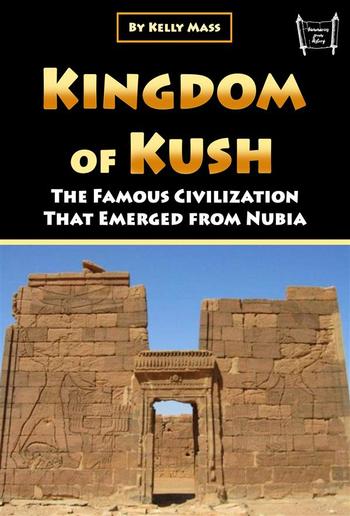
Kelly Mass - Kingdom of Kush
Kingdom of Kush
The Famous Civilization That Emerged from Nubia
Kelly Mass
Description
Situated in present-day northern Sudan and southern Egypt, the ancient Nubian Kingdom of Kush thrived along the Nile Valley, marking an early cradle of civilization.This region gave rise to intricate communities engaged in trade and craftsmanship.Around 2450 to 1450 BC, the city-state of Kerma emerged as a dominant political force, reigning over the Nile Valley between the first and fourth cataracts—a territory comparable to Egypt. Recognized by the Egyptians as "Kush," Kerma engaged in intermittent warfare, trade, and cultural exchange with Egypt over the ensuing centuries.During the New Kingdom period (1550–1070 BC), Egypt exerted control over much of Nubia, but following Egypt's decline in the Late Bronze Age collapse, the Kushites restored their empire in Napata (modern Karima, Sudan). While sharing cultural traits with Egypt, Kush developed its own distinct civilization.King Kashta peacefully ascended to the throne of Upper Egypt, and his daughter, Amenirdis, became the Divine Adoratrice of Amun in Thebes.The Twenty-fifth Dynasty, led by the Kushites, took root after Piye's invasion of Lower Egypt in the ninth century BC. The Kushite monarchs governed Egypt for about a century until the Assyrian conquest, when Psamtik I of Egypt expelled them in the mid-seventh century BC. Following this rupture, the Kushite capital shifted to Mero, known to the Greeks as Aethiopia.From the third century BC to the third century AD, Northern Nubia faced Egyptian annexation, enduring as the Dodekaschoinos in the Greco-Roman world under Macedonian and Roman rule.Yesebokheamani reclaimed control, sustaining the Kingdom of Kush as a significant regional power until the fourth century AD. Internal strife, climatic challenges, and invasions by the Noba people led to its decline. The Kingdom of Aksum subsequently captured and razed Mero, signaling the kingdom's dissolution into Nobatia, Makuria, and Alodia.Recent archaeological discoveries in the late 20th century have unveiled Kush as a sophisticated society with its language, script, thriving trade and industry, proficiency in archery, and a complex urban structure featuring substantial female participation.The term Nubia, first recorded in Egyptian as k3, likely pronounced in Middle Egyptian, denotes the indigenous people who founded Kush's empire. It has an ethnic connotation, evident in names like King Kashta. Kush, as a geographical term, referred to the area south of the first cataract and was also the residence of the 25th Dynasty monarchs.

